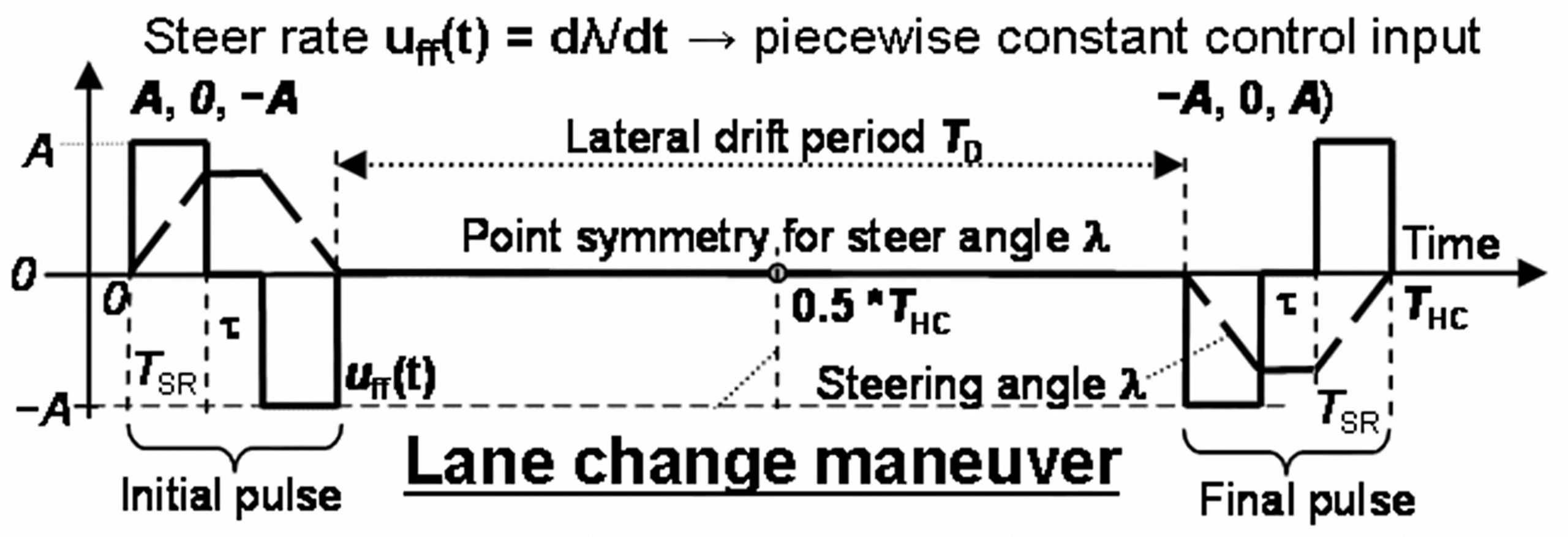
With a realistic model for vehicle motion after steer input, lane changes can be performed without trajectory planning by remembering and applying
- a (speed- and vehicle-dependent) feed-forward control time history (see figure at left): ‘Maneuver’ as knowledge element; integration of the model over time yields the reference trajectory; (TD may be zero)
- monitor the progress of the maneuver and detect deviations from the standard case.
- After some percentage of the maneuver has been applied, the new lane may have been picked up, and the final part of the maneuver is done by feedback control relative to the new lane super-imposed on the feed-forward part of the nominal trajectory.
This automatically corrects discrepancies between the road model underlying the feed-forward maneuver and the real situation encountered.
Real lane change maneuver
with VaMP (1994):
sedan Mercedes 500 SEL;
nominal duration = 8 seconds;
lane width ≈ 3.8 m;
maximum yaw angle ≈10 degrees.
Feedback component superimposed on feed-forward control time history
(top left with TD = 0, inverted for opposite lane change direction).
References
Bruedigam C (1994). Intelligente Fahrmanoever sehender autonomer Fahrzeuge in autobahnaehnlicher Umgebung. Dissertation UniBwM / LRT. Kurzfassg
Dickmanns ED, Müller N (1995). Scene Recognition and Navigation Capabilities for Lane Changes and Turns in Vision-Based Vehicle Guidance. Control Engineering Practice, 2nd IFAC Conf. on Intelligent Autonomous Vehicles-95, Helsinki pdf
Behringer R (1996). Visuelle Erkennung und Interpretation des Fahrspurverlaufes durch Rechnersehen für ein autonomes Straßenfahrzeug. Dissertation, UniBwM / LRT. Kurzfassg
Dickmanns ED (2007). Dynamic Vision for Perception and Control of Motion. Springer-Verlag, (Sections 3.4.5.2 and 14.6.2) Content
